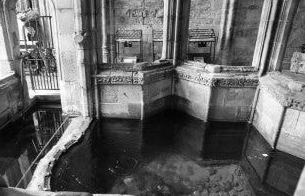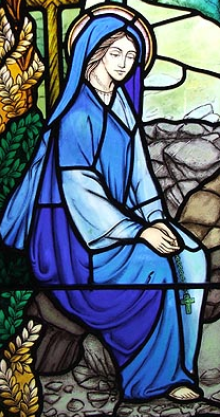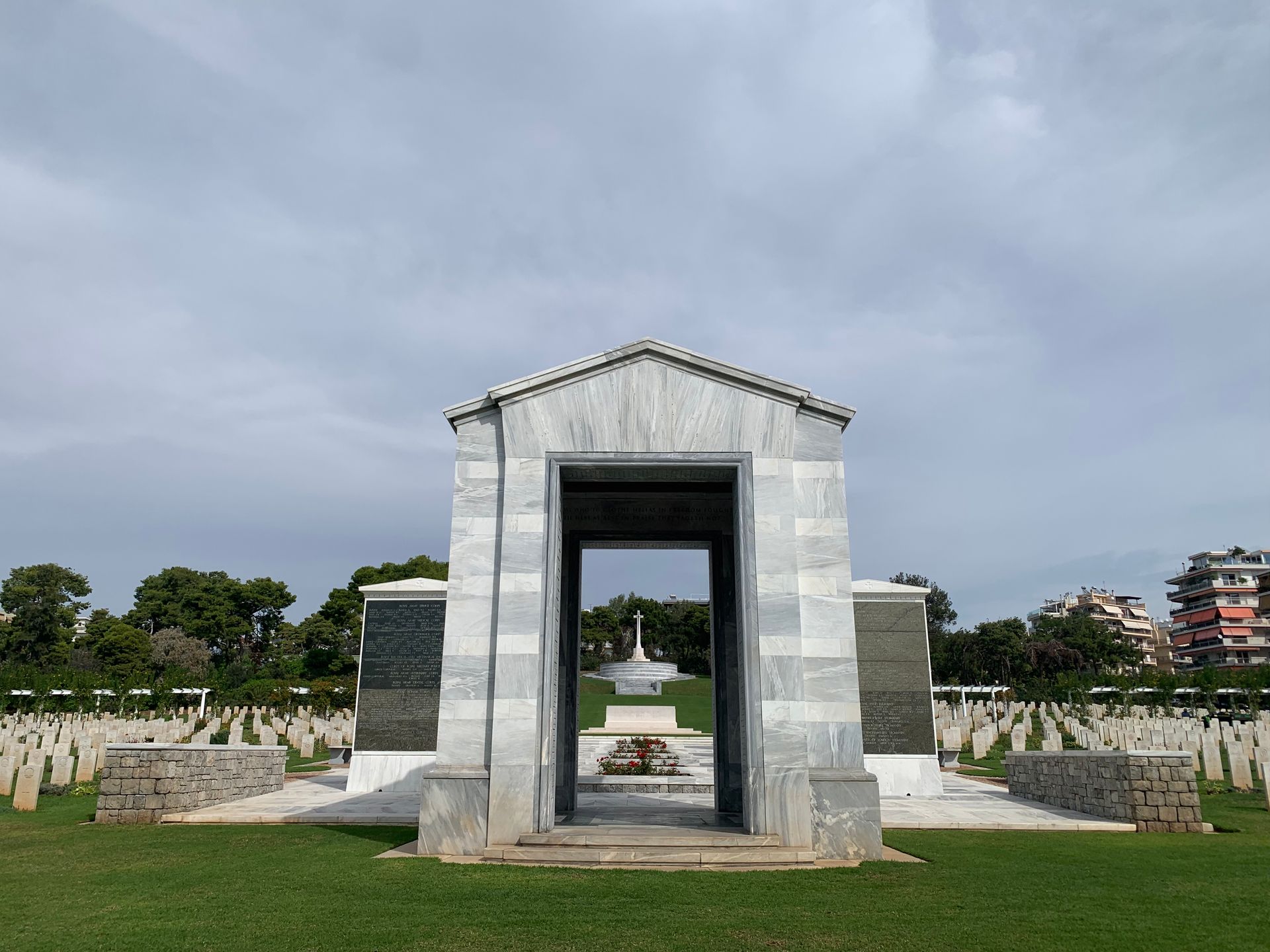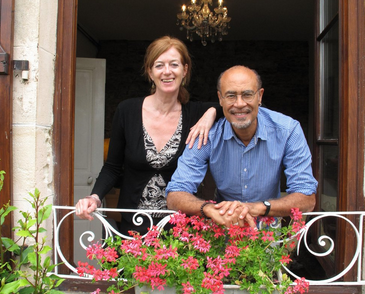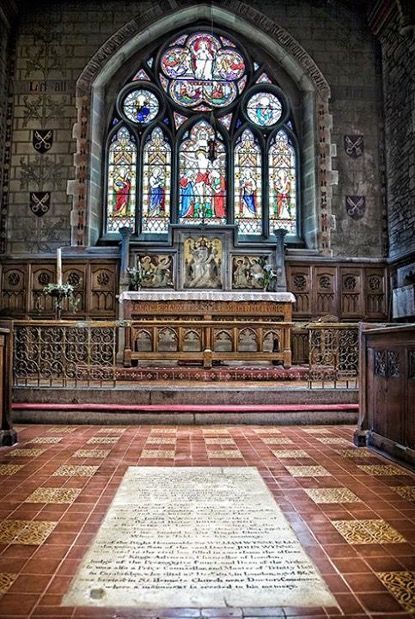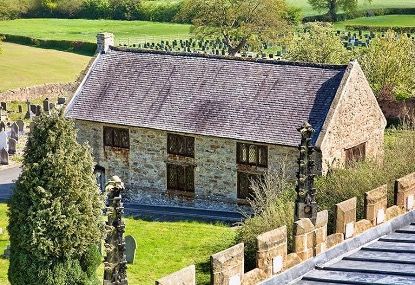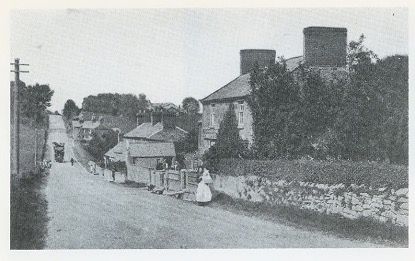Last bit for now about St. Winefride and the history surrounding the shrine at Holywell.
A famous battle took place at Shrewsbury on 21st July 1403 - 'The Battle of Shrewsbury' - roughly located where the hamlet of Battlefield some 3 miles north of modern Shrewsbury now sits. You'll pass through it if you go on the train from Shrewsbury to Crewe, a journey I've made several times over the years.
St Winefride rose to prominence after this clash which saw Harry Hotspur (Henry Percy of Northumberland) defeated and killed at 39 years of age by Lancastrian King Henry IV - aka Henry Bolingbroke. There's a link to my home town of Flint here, but I'll write about that again. During the battle, the future Henry V had his jaw bone pieced by an arrow but, luckily for him, he had some good medieval surgeons around him who removed it successfully and prevented it from becoming septic - a miracle in those days. Contemporary reports say that the future king prayed to St. Winefride for a successful recovery and seems his prayers were answered, so on getting better, he
developed a profound devotion to her.
Move on 12 years to the Battle of Agincourt - you've all seen Henry V played by Kenneth Branagh - and Henry V earnestly sought St. Winefride's intervention with prayers on the eve of the battle, which he believed helped his victory against overwhelming French odds - (some estimate 8000 English v 25000 French). After the 1415 battle Henry V embarked on a barefoot pilgrimage from Shrewsbury to Holywell to give thanks to St. Winefride.
She didn't help him in 1422 though, when he died at the young age of 35 succumbing to dysentery.
During the late fifteenth century, the Holywell chapel underwent a magnificent reconstruction thanks to Margaret Beaufort the mother of Henry VII, to give thanks for his victory over Richard III at the Battle of Bosworth Field (22nd August 1485). The Shrine of St. Winefride is just one of five churches, locally called 'The Five Sisters' sitiuuated in Gresford, Wrexham, Northop, Mold & Holywell (the Flintshire/Wrexham area) which Margaret Beaufort reconstructed to give thanks. This includes the beautiful church of St Eurgain & St Peter's Church in Northop my home village. All of these places have intricate stonework which beautifully showcases the motifs of both Henry VII and his faithful supporters, the Stanleys. More on this to come in future blogs.
Yesterday, I mentioned the bones of St. Winefride being taken to Shrewsbury Abbey from Holywell because of 'Religious Reforms' of Henry VIII, but this led to a devastating impact on Shrewsbury Abbey, resulting in the destruction of St. Winefride's shrine there and the removal of her remains, which led to most of them being lost in perpetuity.
The 'English' Civil War from 1642 - 1651 didn't help either and any remains which hd found their way back to the shrine at Holywell were further lost as the Holywell chapel suffered damage from the Puritans who cared not one iota for historical religious idolatry of this kind.
Over the centuries though, despite the immense obstacles encountered, Catholics unwaveringly persevered, defying persecution to surreptitiously immerse themselves in the sacred waters of St Winefride's pool. It wasn't until the abolishment of anti-Catholic laws in 1829 that they were finally able to openly observe their faith. St Winefride's Well, 'the Lourdes of Wales,' proudly boasts the title of the oldest pilgrimage destination in the British Isles, with an illustrious history spanning over 1300 years.
Some of the more famous visitors through history are...
1189 Richard I
Richard I, the Lionheart, made a pilgrimage to the Well.
1416 Henry V
Following his victory at Agincourt, Henry V paid a thanksgiving visit to the Well:
'The King, with great reverence, went on foot in pilgrimage from Shrewsbury to St Winefride's Well in North Wales' (Adam of Usk, "Chronicle".)
1461 Edward IV
According to the Welsh poet Tudor Aled, Edward IV came on pilgrimage, when he placed a pinch of earth taken from beside the Well upon his crown.
1686 James II and Queen Mary Beatrice
On 29th August 1686 James II and Queen Mary Beatrice came on pilgrimage to pray for an heir. According to Thomas Pennant of Whitford & Holywel in 1796)
'the Jesuits then in charge of the Well presented the King with a present of the very shift in which his Great Grand Mother Mary Stuart lost her head.'
1828 Princess Victoria and King Leopold of Belgium
Princess Victoria, staying in Holywell, with her uncle King Leopold of Belgium, visited the Well.
2005 Duchess of Gloucester
14 October: visit of HRH The Duchess of Gloucester to St Winefride's Well and the Museum.
2021 King Charles, then The Prince of Wales
#StWinefride #StWinefridesWell #Lourdes #LourdesofWales #amwriting #readerscommunity #historyofwales

